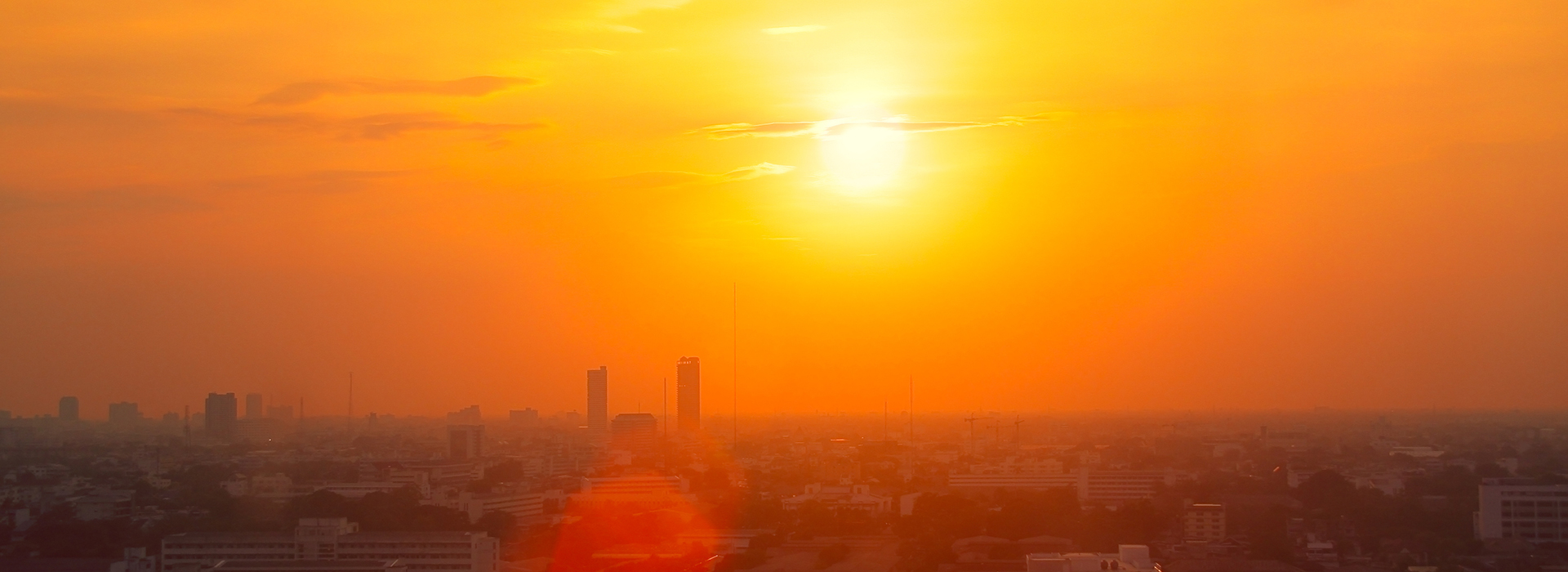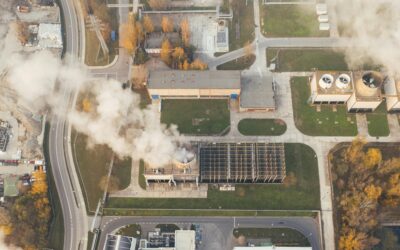In the summer of 2022, temperatures soared to new heights, leading to massive droughts and numerous wildfires. In some parts of California, temperatures rose to over 110 degrees Fahrenheit and hundreds of acres of forests burned out of control.
As summertime subsides, and autumn and winter take hold, temperatures are falling again. But what causes these massive heat waves and the droughts and wildfires that tagged along? We review this, what to expect in summer 2023, and how to prepare for it below.
What Caused the Sudden Heat Waves Across the U.S. in the Summer of 2022?
Many things could cause the severe weather we saw in the summer of 2022, but experts point toward several key causes of the heat and droughts we experienced. Here are some of the causes of the summer 2022 heat wave:
Human-Caused Climate Change
As we continue burning fossil fuels to power our automobiles and create electricity, we release greenhouse gases (GHGs), which can impact global temperatures by trapping heat in the atmosphere. Since 1880, the average global temperature has risen at least 1.1 degrees Celsius (1.9 degrees Fahrenheit). The worst of this warming has taken place since 1975, as it’s warmed at a rate of 0.15 to 0.20 degrees Celsius per decade.
This human-influenced climate change certainly played a significant role in the extreme weather we experienced in the summer of 2022 and will continue to experience in the future. Climate change is causing wind patterns and weather systems to shift, resulting in more extreme climate events, such as more intense heat waves.
Plus, the warmer the world becomes, the less of an anomaly we need to create extreme heat because we’re already so close to those thresholds.
Jet Stream Shifts
While global warming impacts the whole world, the Arctic is warming even faster. In fact, it’s warming at a rate of nearly four times faster than the rest of the world. This results in a smaller difference between the arctic temperatures and those at the equator, which causes swings in the North Atlantic jet stream.
The North Atlantic jet stream is the flow of westerly winds that circles the arctic. This stream directly impacts the weather in eastern North America and west Europe and can account for 10% to 50% of the precipitation variance in those areas.
Because it directly impacts weather in the U.S., these shifts in the jet stream cause extreme weather patterns, including hot weather and droughts.
Heat Domes
Heat domes, which are large pockets of hot air trapped in a high-pressure system, are becoming more frequent. These are generally formed by a strong change in ocean temperatures in the tropical Pacific Ocean during the preceding winter.
Sometimes, these domes can become trapped over specific geographic areas and cause massive heat waves, as we experienced in the summer of 2022.
El Nino and La Nina
El Nino and La Nina are weather patterns that occur every three to five years. An El Nino pattern brings warm air northward from the equatorial Pacific Ocean and up the west coast of North America. La Nina, on the other hand, brings in colder waters and weather.
In 2022, we were in a La Nina, leading many experts to wonder how extreme the heat could get if there was an El Nino event.
What Can We Expect From Weather Patterns in 2023?
The summer of 2022 was a brutal one for many — particularly those in the southwest. But will 2023 bring about some relief? Most experts believe not, for a handful of reasons. Let’s review why experts anticipate a repeat of the 2022 summer heat.
Lingering La Nina
La Nina is a one- to three-year event, but the three-year variety is rare. Despite its rarity, it appears as if the current La Nina will linger for its third year. While this will bring wetter conditions to the northwest, it’ll also result in dry, hot conditions in the southwest.
In the summer of 2022, these dry conditions combined with record heat and resulted in massive wildfires across the southwest. Unfortunately, if La Nina remains for its third year, this will likely bear similar results.
Continuing Climate Change
While the world is making strides in lowering GHG emissions by switching from fossil fuels and enacting carbon removal programs, climate change remains a problem. The world continues getting hotter each year, resulting in more extreme weather patterns. This includes heat waves and droughts.
Chances are these weather patterns will worsen before they improve, so logic says we can expect similar heat waves and droughts in 2023.
How Should You Prepare for Another Heat Wave?
With another heat wave likely in the summer of 2023, the safest bet is to be prepared before it strikes. From ensuring your air conditioner is up to the task of cooling your house to having plenty of cold water on hand, these tips will help you get ready.
Check Your Air Conditioning Early
When a heat wave hits, you want to make sure your air conditioning is up to the task of keeping you and your family cool. Instead of waiting to get that much-needed air conditioning checkup when the weather report warns you of an impending heat wave, have it checked now.
This will ensure you don’t get stuck in a backlog of people rushing to get their air conditioning services ahead of the heat wave. Also, this allows time to get any replacement parts if there is an issue and your unit is in need of repair.
You’ll also want to change all the filters in your house to ensure your air conditioning is running at peak efficiency.
What if your home doesn’t have air conditioning, and the 2022 summer heat was unbearable? If your budget allows for it, you can have central air conditioning installed. Or if you can’t swing the price of a central air conditioning unit, you can also opt for window-mounted units in select rooms throughout the house or purchase a portable air conditioning unit that you can move between rooms as needed.
Check and Adjust Fans
Your air conditioning isn’t the only cooling item in your house. Your ceiling fans can also go a long way in keeping the heat at bay. However, you need to ensure they’re operating correctly. Turn on all your fans before the heat wave hits and verify they’re all operational.
While doing that, make sure they are all spinning counterclockwise as you look up at them. This pushes cooler air toward the floor and is the proper setting for summertime. If they’re spinning clockwise, find the switch on the side of the fan that reverses the rotation and change it.
If you don’t have air conditioning, you can also use fans to reduce how hot the air feels and circulate air throughout your home. However, the World Health Organization and Centers for Disease Control don’t recommend using a fan when the temperature inside your home exceeds 90 degrees Fahrenheit, as this only makes the air feel cooler, but it is still hot air passing over your body. And by feeling cooler, you can overheat internally without realizing it.
Block Out the Sun
Most houses have a few windows that get tons of sun and can make it harder to keep things cool. Find these windows in your house and get high-quality window coverings to block out the sun during these times of the day.
Blackout curtains work well, but the best solution is a set of cellular shades, which have pockets of air that filter out more of the sun’s rays and heat. If you can’t install these shades for any reason, just about any sun-blocking shade or curtain is better than none.
If you can’t install new window coverings, you can also install temporary heat reflectors. Simply cover a piece of cardboard with aluminum foil and place this over your window to block out the sun and reflect the heat. Build these reflectors ahead of time so they’re ready when the heat wave strikes.
Refrigerate Your Water
Fill up a handful of reusable insulated bottles with water and place them in the refrigerator ahead of a heat wave. This ensures you have a good supply of cold water when the temperatures rise. Cold water helps prevent your body from overheating more effectively than room-temperature water.
Avoid buying bottled water, as this creates unnecessary plastic waste. Instead, opt for tap water, or if you prefer filtered water, buy a tap water filter or a filtering pitcher, then transfer the water to your reusable water bottle.
Weather Seal Your Home
You can lose a lot of energy through bad weather seals and lack of insulation throughout your home. Check around your doors and windows to make sure your weather stripping isn’t cracked or otherwise damaged, which could allow hot air into your home.
If they are damaged, you can purchase replacements at a local home improvement store or online and replace them yourself. If you lack the technical know-how to install them, you can also hire a professional.
You might also consider investing in energy-efficient windows or properly insulating your home.
Prepare for an Upcoming Heat Wave and Help Prevent More With Terrapass
All the signs point toward another heat wave in 2023, as GHG emissions, climate change, and the lingering La Nina are all working to push temperatures higher. Fortunately, you can be ready ahead of time with just a little preparation.
However, we can all do our part to help lower the risk of more and worsening heat waves by acting now to reduce our carbon footprints. You can help by making lifestyle changes and purchasing carbon removal credits to offset unavoidable carbon emissions. Check out Terrapass’s monthly carbon removal subscriptions for other common carbon-emitting events, such as flights, road trips, weddings, and more.
Brought to you by terrapass.com
Featured image:










